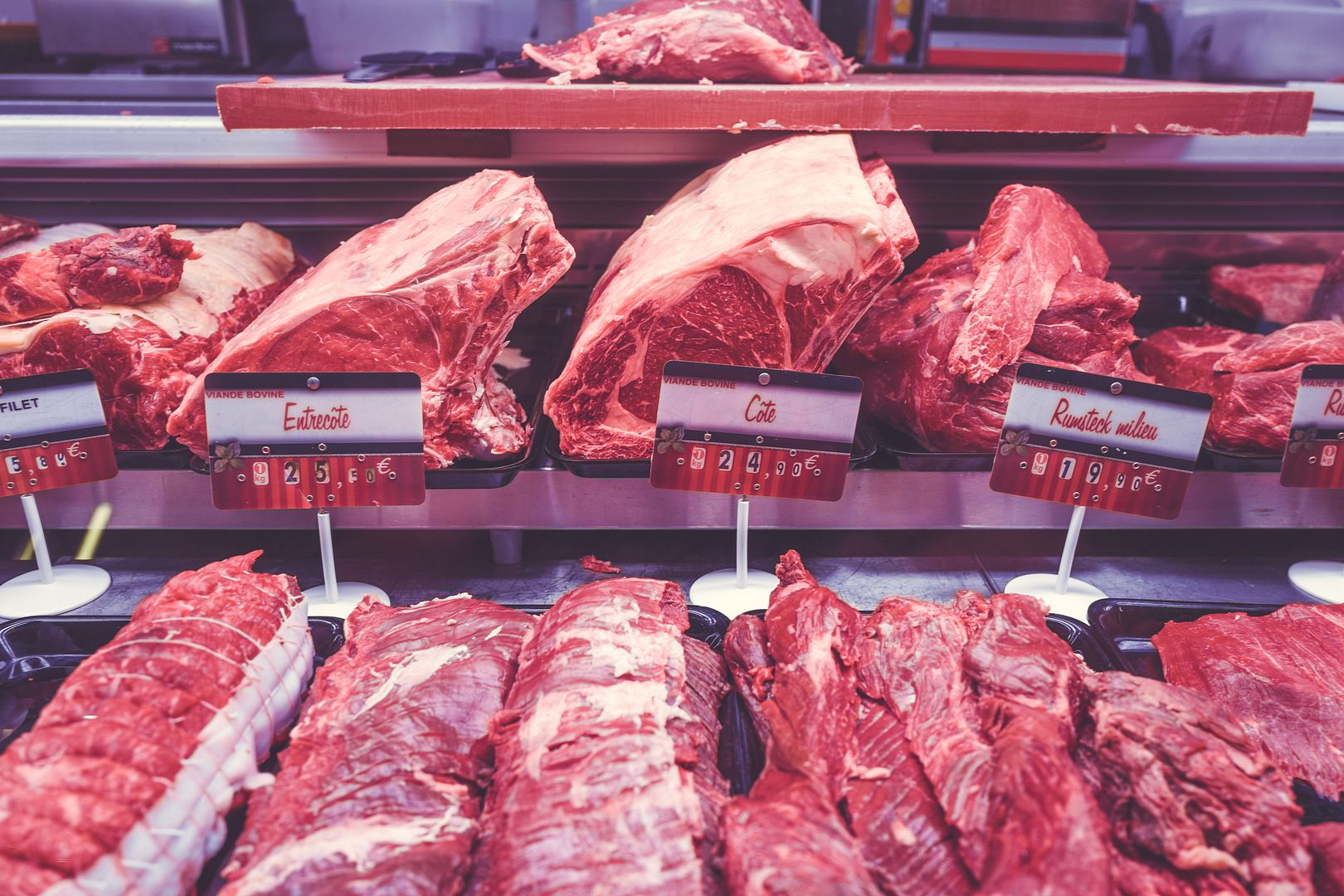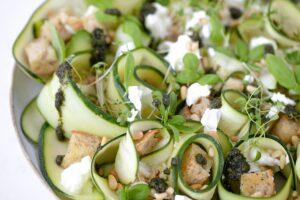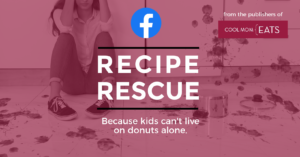Food shopping can be a maddening, especially with kids in tow. Navigating packed aisles, meltdowns, opinions, cravings, and the power of food marketing is no small task — every week. So, we’ve created a cheat sheet that will help you find the dairy, egg, and meat products you want without going crazy trying to make sense of increasingly confusing food labels.
Phew.
Before we dive in, if you are very particular about food, please remember that regulations are always changing, new products are constantly popping up, manufacturing formulas and facilities shift, and companies — even unlikely partners — merge frequently. The food landscape is ever changing. To really keep up, you need to keep your own eye out and stay on top of food news.
But, if like us, you’re moving fast and just need some quick guidelines that help direct you to healthier options quickly, this guide to the food labels you’ll find on dairy, eggs, and meat will get you started.
The following is an edited excerpt from the Supermarket Guide in my cookbook, Make It Easy: 120 Mix-and-Match Recipes to Cook From Scratch with Smart, Store-Bought Shortcuts When You Need Them, available at our Amazon affiliate.
Related: Easy ways to save money at the supermarket — no circulars required!
If it’s easier for you to watch — and chat (I’ll still answer questions on the thread!) — you might want to start by watching this Facebook Live. Then, if you want, read on for more detail.
How to decode those WTF food labels on dairy, eggs, and meat
Kitchen Help Live: How to decode those WTF food labels on dairy, eggs, and meat. It's all you need to know. Quickly. Because you have better things to do.
Posted by Cool Mom Picks on Thursday, April 27, 2017
Decoding Food Labels: Dairy

THE BOTTOM LINE:
* If you want to limit added hormones in your family’s diet, stick with dairy labeled rbST and rbGH free. If you don’t see that label, organic is the next safest bet.
* Money for organic dairy is best spent on brands that produce or get dairy from non-industrial or smaller local farms, including co-ops. (Larger brands like Stonyfield, for example, get their milk from a collection of smaller organic farms across the country, making it possible for them to distribute products widely.)
* Also, grass fed dairy is more likely to come from cows that grazed naturally for longer and more frequently, which can even make dairy taste better.
* A quick note on butter: It takes 11 quarts of milk to make a single pound of butter, so if you are dedicated to organic, but have a limited budget, start with butter.
************************
The big question with dairy tends to be whether buying organic is worth it — because it can certainly cost way more than conventional.
USDA organic dairy is… produced from cows that must have year-round access to the outdoors, access to pasture during the grazing season, and must get at least 30 percent of their food from pasture grown without synthetic herbicides and pesticides during the grazing season, which varies region to region.
USDA organic dairy is NOT… guaranteed to come from non-industrial farms. On the contrary, one of the major national organic dairy brands produces milk and milk products on mega industrial farms. Much of the organic dairy produced for white labels — the generic label with your supermarket’s name on it — is also produced on industrial farms.
Antibiotics and hormones are another big concern with dairy. Antibiotics are not found in any dairy that is commercially sold for human consumption. The FDA tests all milk for antibiotics and pulls any milk that contains them before it can hit the market or be used to make other dairy food products, regardless of what kind of farm it comes from.
Keep in mind that they are testing for an amount that is above a certain threshold that the government considers safe (and I consider minuscule). If you’re looking for milk from cows that have never been treated for antibiotics ever, you’ll need to do more research. Just like with us, it’s a common treatment for sick cows and farmers are legally bound to treat animals when they are sick.
Hormones, on the other hand, are different. While there are, of course, natural hormones that cows produce on their own that is found in all milk, it is common practice in the conventional dairy industry to use additional growth hormones deemed safe by the FDA to increase cows’ natural milk production. The level of hormones — particularly the growth hormones rbST rbGH — is regularly found to be higher in conventional milk.
Related: How to choose and where to buy better bacon.
Decoding Food Labels: Eggs

THE BOTTOM LINE:
* If it’s important to you that your eggs come from chickens fed organic feed and/or pasture (i.e., not conventional farm feed), you want to look for organic or organic pasture raised.
* If you’re more concerned with humane treatment — that the chickens not live their lives cramped, caged, in the dark, or worse, with clipped wings or beaks — you’ll want to avoid industrially farmed eggs. Free-range certified humane is your best bet in terms of labels. Organic pasture raised is good for this too.
* If both organic and humane conditions are important, organic pasture raised is likely your best bet.
************************
Believe it or not, eggs are even trickier than other dairy. Also, if you ask me (and this is personal), not many great brands that I trust and that also taste good are shipped nationwide. There are a few — I buy from Handsome Brook Farm, Vital Farms, and Organic Valley — but nothing compares to what you’ll find at the farmer’s market or from a local farm.
Here are what egg labels mean, and if you don’t see any of these on your carton, chances are they are from chickens raised on conventional feed (non-organic, possibly GMO) in cages on industrial farms.
USDA organic eggs are… from non-caged chickens raised on organic feed that are supposed to have access to the outside, though they may be primarily raised inside.
Non-organic pasture raised eggs are… from birds that typically seem to be raised in wide open green space. Pasture birds may end up eating some grass and worms (like real birds!) and are also fed non-organic feed.
Organic pasture raised eggs are… from outdoor birds that are raised and fed according to USDA guidelines (similar to the ones for dairy cows, above).
Cage-free eggs are… from birds not kept in cages, but often raised indoors where they don’t see the light of day. There are no regulations on how much space cage-free birds get, so many are packed in pretty tightly. Still, they often get marginally more room and freedom to graze on food compared to caged chickens.
Free range eggs are… from birds that are raised indoors, but are free to go outside, though there are no regulations on how long they are allowed to stay outside.
Free range certified humane eggs are… from free range birds that are left to be outside for up to 6 hours a day on at least 2 square feet of outdoor space.
Vegetarian eggs are… from chickens fed exclusively vegetarian feed. Sometimes this label signifies indoor-raised chickens since pasture raised may eat worms and other foraged insects.
I know, whoa, right?
Related: 8 things you should always buy at Trader Joe’s to save big on groceries.
Decoding Food Labels: Meat

THE BOTTOM LINE:
* If you’re strictly committed to meat that you are sure is sustainable, healthy, and comes from happy animals, stop buying meat at conventional markets, and instead, get it from someplace that can tell you about where your meat is sourced, whether a local farm, independent butcher, or natural foods store.
* Organic is the most comprehensive label for chicken at conventional markets. And, in general, organic is preferable to natural.
* For beef and lamb, look for meat raised on grass that is also hormone free and raised on vegetarian feed (on the off-season, when pasture/grass is not available).
* With some estimates claiming that over 90% of domestic pork is produced on factory farms, it’s hard to suggest anything other than finding small local pork producers that raise pasture pork.
************************
The easiest way to try to avoid industrial meat is to buy organic, though truth be told, doing that alone is far from fail proof. Many organic meat producers have become seriously large operations. Still, organic is a regulated label that requires animals to be raised on 100% organic and vegetarian feed, have year-round access to outdoors, and may not be treated with antibiotics or hormones. For chicken especially, if you’re shopping at a conventional market, organic is the most comprehensive label.
For beef, pork, and lamb, grass fed and pasture raised is thought to be an even better choice. The problem is that the label has serious flaws. The bigger problem is that the other meat labels — free range, natural, and antibiotic-free — turn out to not mean much and can easily be slapped on meat from factory farms.
All this said, there are a handful of nationally distributed meat brands that are better than the rest, but looking for local purveyors through sources like the Eat Well Guide and Local Harvest are your best bet for healthier meat. And don’t be afraid to buy meat online! Some of the larger farms sustainably raising meat ship their meats nationwide.






